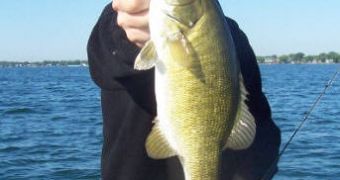Some fish may be hermaphrodites by nature, but they live in the sea and their breeding is not affected by this. Instead, what happens with many freshwater fish in developed countries is not something natural.
A new research published in the "Journal of Aquatic Animal Health" has made a step closer to find out why so many male smallmouth bass in the Potomac River basin produce immature female egg cells in their testes, a type of artificially-induced hermaphrodism or intersex, called testicular oocytes (TO). The team at the U.S. Geological Survey (USGS) found a high incidence of intersex males in the Potomac watershed, at sites of most intense farming and highest human population, and TO reached the highest values in the spring, just before and during the spawning season.
"We collected smallmouth bass from the Shenandoah, the South Branch of the Potomac, and out of the basin for comparison. The fish from the sites with the highest human population density and the most farming had the highest incidences of intersex. On the Shenandoah, rates of intersex were highest, ranging from 80-100 % intersex," said lead researcher Vicki Blazer.
Outside the Potomac basin, the most densely-populated and heavily-farmed site presented a TO rate in basses of 75%, whereas the less habited places - 14-35%. Along the South Branch of the Potomac, TO varied from 47 to 77%, the higher percentages being linked to increased farming and human population.
Along the seasons, the TO incidence levels varied from 69-100%, during the spring pre-spawn to spawning period, to 25-67% during the summer post-spawn period.
TO has been signaled in other rivers and in other species too: spot-tail shiners in the St. Lawrence River, white suckers in Colorado, shovelnose sturgeon in the Mississippi, white perch from the Great Lakes, roach in the U.K and Denmark, sharp-tooth catfish in South Africa, three-spine stickleback in Germany, and barbel in Italy, but also in marine and estuarine species in Japan, the UK and the Mediterranean.
In many places, this has been connected to known or suspected human-originated endocrine disrupting contaminants, usually mimicking estrogens (female sex hormones) coming from untreated standard sewages and runoff from farms. The source of these chemicals are birth control pills and hormone replacements, pesticides, fertilizers and synthetic hormones from farm animals.

 14 DAY TRIAL //
14 DAY TRIAL //